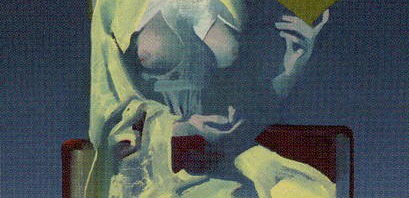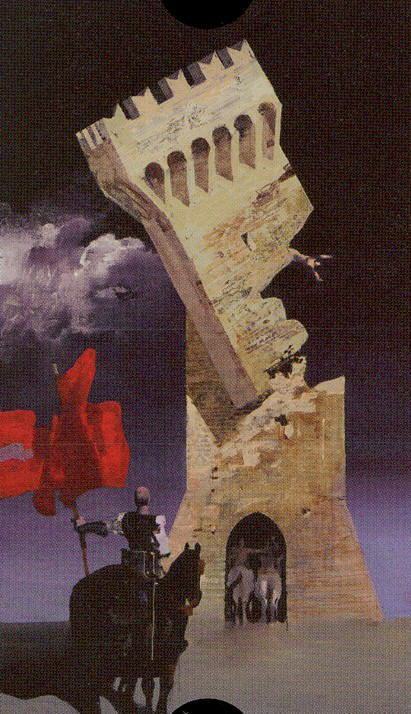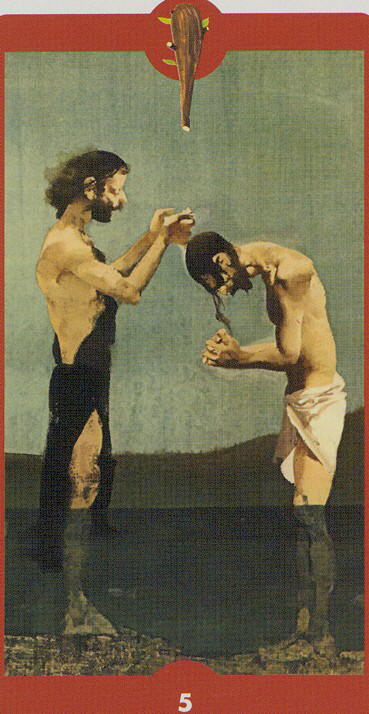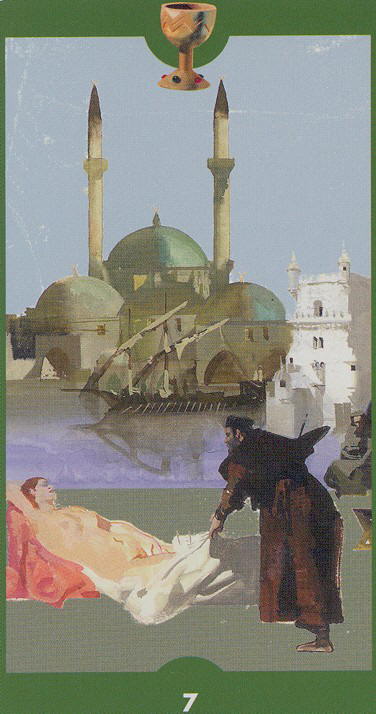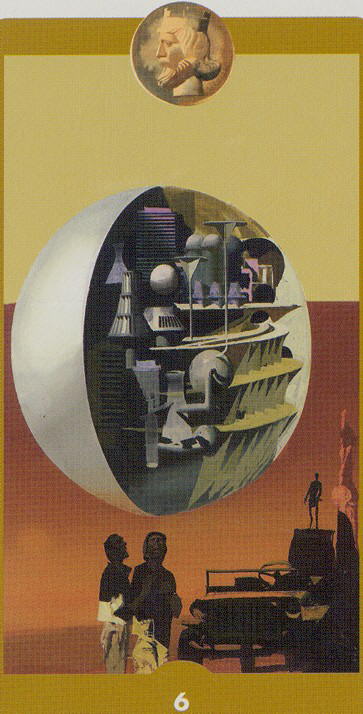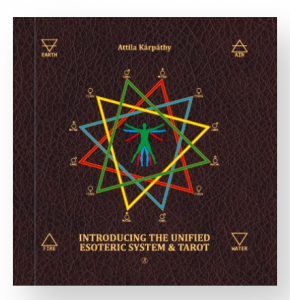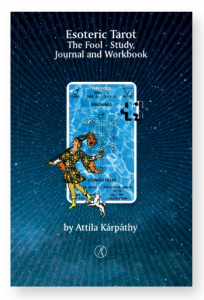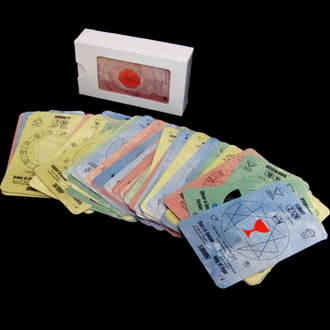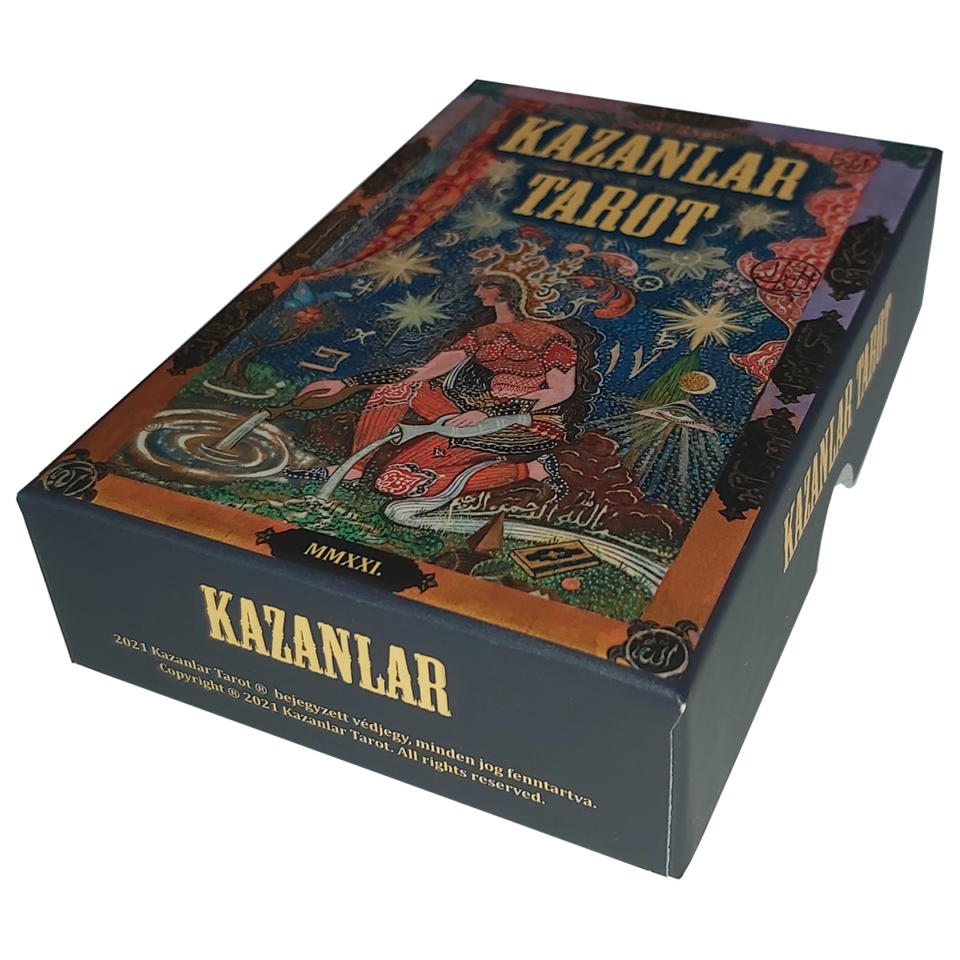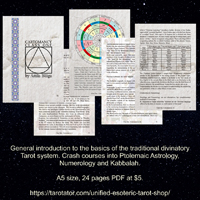In the Tarot of the Imagination, Ferenc Pinter creates a surreal dream landscape combining the familiar with the bizarre. His images are fragments of perception designed to stimulate thoughts and ideas in the subconsious mind. Some cards follow traditional tarot symbols, others reflect Pinter’s unique vision.
The pictures draw on different time periods in European history, in particular the first half of the 20th century. This deck was originally published as a majors-only deck, but this version also includes the 56 minor arcana cards. The majors show the card’s number and name in six languages. The minor cards focus almost entirely on the card’s image. No names are given, just the number at the bottom, and suit symbol at the top. Suit cards are color-coded with green for cups, blue for swords, yellow for pentacles and reddish-brown for wands.* The court cards are archetypal figures, either symbolic or real. For example, the King of Cups appears to be Henry VIII. Court cards are identified by a symbol at the bottom instead of a number. This deck is published by Lo Scarabeo of Italy and distributed by Llewellyn in the US. (learntarot.com)
Ferenc Pinter (31 October 1931 – 28 February 2008) was an Italian painter and illustrator.
Pinter was born at Alassio, Liguria, to Hungarian father and Italian mother. His name was spelled Pintér Ferenc in Hungarian; he signed most of his works with the Hungarian name order; however in Italy he was known as Ferenc Pintér with the accent over the second e often dropped to avoid confusion. In 1940 his family moved to Budapest where his father received health treatments. Orphaned, Pinter tried to enther the Academy of Fine Arts in Budapest, but he was not admitted for his divergence with the communist ideas of the time. After the 1956 Hungarian Revolution, he fled to Italy. There, in Milan, he was commissioned for a series of advertisement illustrations and posters until, in 1960, he entered the Mondadori publisher with which he collaborated for 32 years.
Pinter realized numerous covers for Mondadori books and magazines, such as Segretissimo (a spy stories series, 14 covers), as well as Maigret and Agatha Christie translations and for Oscar Mondadori (the most sold Italian pocket series). His favoured technique was tempera.
In 1989 he painted the 22 Tarot Triumphs published by Lo Scarabeo of Turin, with a foreword by art historian Federico Zeri, followed by 56 Minor Arcana (2000–2002) from the same publisher.

